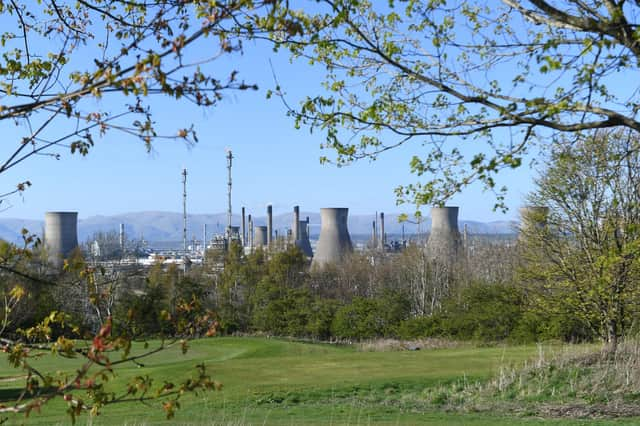Ineos Grangemouth refinery: Anti-nuclear campaigners will put up a huge fight against any attempt to build reactor – Dr Richard Dixon


The idea contains the perfect combination of elements needed to ensure its own defeat. This is a plan to build an untested type of nuclear reactor on a site with significant explosion risks all around, in the middle of the most densely populated part of Scotland, with a government that is opposed to nuclear, and, best of all, for a man trade unionists and the public love to hate.
Up to now, nuclear reactors have been placed in out-of-the way places in case the worst happens – from leaks and explosions to terrorist attacks. Or even direct military attacks as in Ukraine. This reactor would be in the middle of the Central Belt, with maximum consequences guaranteed if something goes wrong.
Advertisement
Hide AdAdvertisement
Hide AdThe nuclear industry’s latest wheeze is the small modular reactor (SMR). They make it in a factory, bring it in on trucks and bolt it together on site. There are a number of problems. Firstly they aren’t small, needing an area the size of two football pitches and with the latest proposal having a capacity half as big as the full-scale reactors used by the French nuclear fleet.=
They will cost an eye-watering sum: the current estimate is £2 billion but the one certainty about the nuclear industry is that the final cost is always several times what they originally told you. And they would produce proportionally more radioactive waste than the bigger versions. And, of course, there is still no permanent solution for nuclear waste, 70 years on from the start of the civil nuclear programme. Oh yes, and it will be well into the 2030s before an SMR could be built.
The UK Government is keen on the idea, having allocated more than £200 million to their development. But the Scottish Government has been implacably opposed to new nuclear, concentrating instead on energy efficiency and renewable energy. Renewable energy is much cheaper, much faster to install and much, much safer. The scenarios drawn up ahead of the imminent Energy Strategy did not contain any new nuclear power, small, large or otherwise, and the Scottish Government has already been quoted in the press as saying it would block any attempt to build a reactor at Grangemouth.
The Grangemouth site is home to a range of hazardous industries, so much so that Falkirk’s football stadium only has stands on three sides because the fourth would have been inside the Grangemouth ‘blast zone’. Aside from an active war zone, there can’t be a more dangerous place to put a pile of super-hot radioactive material.
Then there is Sir Jim Ratcliffe, twice thwarted in his ambition to become the UK’s Fracker in Chief and a hate figure among the unions for the way he treated workers at Grangemouth. The ideal site-based environmental campaign would be based on this being a dangerous proposal in the wrong place, with hostile politics and a really clear bad guy. This proposal has it all and, if it starts to become real, you can expect an almighty fight.
Dr Richard Dixon is an environmental campaigner and consultant
Comments
Want to join the conversation? Please or to comment on this article.